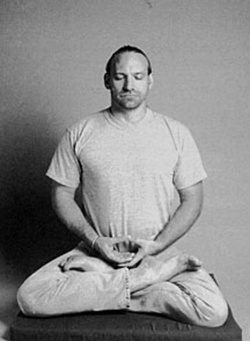Sunyata, Theory of Emptiness
Sunyata or theory of emptiness is about understanding a person`s own experiences and relation to the world. It is a theory about an individual`s capacity for objective thought. The theory of emptiness is also described as one of the most celebrated doctrines of Buddhist philosopher, Nagarjuna. According to the theory of Sunyata, if one is to be able to understand life`s experiences for what they are, the unreflective view must be replaced with a more objective one, a view achieved by reflecting on the origin of such experiences. One must attain a perspective on one`s own experience which enables one to think of illusions, dreams and holograms along with their causation, and so to explain their occurrence without recourse to the assumption that they have genuine content. The process of stepping back from the contingencies of appearance produces a sequence of progressively more objective conceptions. If the process can be completed, it is completed in the attainment of an objective view or absolute conception.
Theory of emptiness is proved on the grounds that things do not have self-standing natures (swabhava). The dependent nature of things is what is called `emptiness`, for a dependent nature is one which is not self-standing. Further, it is also believed that dependent origination is emptiness. It is a derivative designation, and it alone is the middle way. Philosophers claim that one is in a position to think of an experience as empty if one can explain its occurrence in terms of a set of causes none of which is an object of the type the experience presents. The ability to think of one`s experiences in this way depends on a person`s first step towards an objective stance. Someone who has taken this first step towards objectivity will contrast two kinds of experience. Part of one`s experience is now understood as arising in dependence of a deviant etiology. The remainder of one`s experience, however, has to be understood in another way, as being about what causes it. The conceptual scheme encoded in common sense offers just such an explanation.
The common-sense understanding of ordinary (non-deviant) experience is of that experience as caused by the object it aims to represent. Such experience is said to have a support in the world of objects. When one thinks in this way of one`s experience as caused by the object it represents, one has a certain conception of objects. They are conceived of as things which can be perceived and can also continue to exist unperceived. Nagarjuna claims that they are conceived of as things which have a `self-standing nature` or `swabhava`. This complex and ambiguous term conveys notions of permanence, stability, endurance, independence, essence, identity. It stands for the idea of an object which can exist independently of any perception or experience, and which, by existing for duration of time, can be perceived more than once at different times. The common-sense understanding of experiences and conceptions is a step in the direction of objectivity, a step away from an uncritical acceptance of the existential presuppositions of experience and conception. The crucial move is the next one, which is described by Nagarjuna as a move from `conventional truth to `ultimate` truth.
When one steps out of the common-sense conception and towards an objective view, the view to which one is led is that all conception is empty. The idea of experience explained by thinking of it as caused by explanatorily independent objects is seen for what it is - a fiction of the common-sense scheme. It is the proper function of rationality to lead one to a critical assessment of one`s own conceptual scheme, to an understanding of the operations and deceptions of common sense, and so eventually to an objective view. Nagarjuna`s claim is that when reason is so used, the objective understanding one attains is that the naive view, the view that there is a role for objects in the causal explanation of experience, is nothing but an appearance of explanation, created by the naive view itself.
The form of understanding encoded in common sense is more objective than blind trust in one`s experience because with it one understands that some experience is genuine and other experience is mere appearance. The Nyaya model of rational inquiry is itself a model embedded within common sense. It is the intuitive, natural, naive account of the rational processes of belief-formation, revision and rejection. However, Nagarjuna presented quite different conception of the means and ends of rationality.

